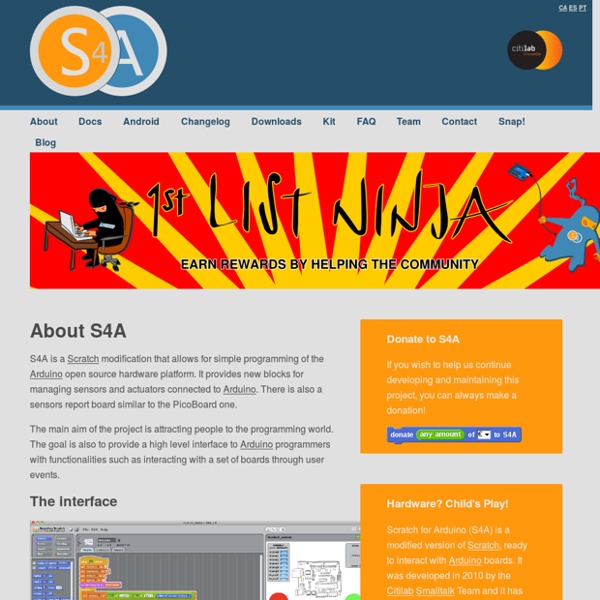



myDAQ Protoboard Kit This kit is designed to connect directly to the National Instruments myDAQ measurement and control tool. The board consists of a prototyping space with GND and 5V rails as well as each I/O line from the myDAQ broken out to standard 0.1" pitched headers. In addition, a breadboard is included with adhesive backing which can be mounted over the prototyping area for solderless prototyping. All of the myDAQ I/O lines are also broken out to female headers to make breadboarding with jumper wires simpler. The National Instruments myDAQ is an affordable measurement and control tool that allows students to perform experiments anywhere. If you aren't familiar with it, have a look at the NI myDAQ website below.
Multitouch Music Controller This project is an Arduino-powered infrared touchscreen / coffee-table interface that I've been using to control various music and graphics applications on my computer. This is an old project that I've recently had time to go back and document/fix up; this project is a little more special to me than most because it was my first Arduino/electronics project, and while I was doing research for it I ended up on Instructables for the very first time. I've been using this controller primarily to drive music and graphics applications running in MaxMSP. Alternative Arduino Interfaces - learn.sparkfun.com Favorited Favorite 2 ArduBlock is a programming environment designed to make “physical computing with Arduino as easy as drag-and-drop.” Instead of writing code, worrying about syntax, and (mis)placing semicolons, ArduBlock allows you to visually program with an snapped-together list of code blocks. ArduBlock builds on the simplicity of Arduino, and creates a perfect beginner gateway to physical computing. Instead of tearing your hair out debugging, you can spend your time creating! Installing ArduBlock
web.media.mit by Jay Silver and Eric Rosenbaum of the MIT Media Lab's Lifelong Kindergarten What's MaKey MaKey? MaKey MaKey is an invention kit for the 21st century. Grove - Starter Kit v3 - Seeed Wiki Introduction Grove is a modular electronics platform for quick prototyping that does not involve soldering or bread boarding. Simply plug the Grove modules into the Grove shield and leverage the example code provided for each Grove module. The Grove Starter Kit contains a multitude of sensors and actuators, so you can start messing around with projects. Preface Android-Arduino LED Strip Lights Step #1: Build the circuit. PrevNext RGB LED strips usually have 4 wires: one for power, and one each for red, green, and blue control. JavaScript Quick Start Processing.js Quick Start - JavaScript Developer Edition Introduction This quick start guide is written from the standpoint of a JavaScript developer. The document assumes you know JavaScript and web programming, but only very basic Processing knowledge is assumed.
Visual Programming Languages and Ardublock From Physical computing to visual programming Visual programming languages for their ability to introduce variety of people including non-specialists and students, to programming. With color coded operators, geometrically shaped data types, and no semicolons (!) Introduction to WhenDo (Supported Products 20% Off) Designed by makers, and for makers, WhenDo is a comprehensive graphical programming developing tool based on Arduino. WhenDo is the most sufficient way to learn about Arduino and every basic programming logic. WhenDo comes compatible with all Arduino MCUs that have Bluetooth 4.0 capability. Features- Graphical Programming In this graphical programming language, users just need to drag condition and execute blocks and freely combine them. This development tool applies many interesting functions that the Arduino can accomplish in WhenDo.- Clear and Meticulous Logic Each valid sentence involves three elements: When block (condition setting), Centre Node (combine When & Do block) and Do block (execute setting).
Control an Arduino With a Wristwatch (TI eZ430 Chronos) The watch The Texas Instruments eZ430 Chronos is a cool gadget. It has bidirectional radio communication, and a whole bunch of sensors: temperature, pressure, acceleration. In fact, it is a development kit for the MSP 430 (a low-power microcontroller), that TI packaged as a watch (pure genius!), and delivered with plenty of tools. Its firmware can be modified to implement new features into the watch. Even without developing anything on the watch, it is a terrific toy: - the watch alone is pretty cool --and has the TI logo ;-), - the default features allow for a wide range of cool experimentations and developments around it.
Android Adventures, part 3: hardware detection in Processing Go to part 2, part4… The main reason I got my Android phone was to get Processing running on it, and start grabbing the sensor data. There were no complete examples (I could find) on how to actually do this though. After two days of research I got it working. Some takeaways: All the code you need to author to setup your SensorManagers , SensorEventListeners , and Sensors , needs to happen in the onResume() function: Putting this stuff in the sketch’s setup() function won’t work.
in Education Having a solid foundation in Computer Science is important in being a successful Software Engineer. This guide is a suggested path for University students to develop their technical skills academically and non-academically through self paced hands-on learning. You may use this guide to determine courses to take but please make sure you are taking courses required for your major or faculty in order to graduate. The online resources provided in this guide are not meant to replace courses available at your University. However, they may help supplement your learnings or provide an introduction to the topic. Using this guide:
How To Control WS2812B Individually Addressable LEDs using Arduino - HowToMechatronics In this tutorial we will learn how to control individually addressable RGB LEDs or a WS2812B LED strip using Arduino. You can watch the following video or read the written tutorial below for more details. First we will explain the working principle through some basic examples and then take a look at really cool Arduino Project using these LEDs, a DIY interactive LED coffee table.